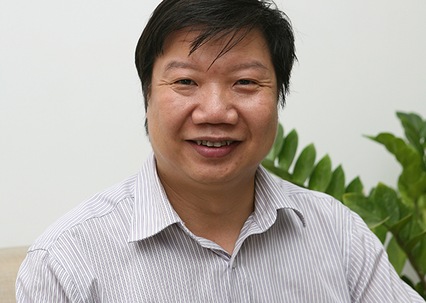 Society
Society

Doctor Trần Như Dương, Deputy Director of the National Institute of Hygiene and Epidemiology, head of the special task force of the Ministry of Health sent to Hải Dương Province in the past month, talks to the Vietnam News Agency about the task force's work and what to expect in the coming months in the fight against COVID-19

|
Doctor Trần Như Dương, Deputy Director of the National Institute of Hygiene and Epidemiology, head of the special task force of the Ministry of Health sent to Hải Dương Province in the past month, talks to the Vietnam News Agency about the task force's work and what to expect in the coming months in the fight against COVID-19
Hải Dưong has basically controlled the pandemic and started to move to a new phase of both pandemic prevention and socio-economic development. However, the fight is not over, so what are the risks ahead of us?
Up to now, with huge efforts, we have obtained such remarkable results. However, the risk of another outbreak is still quite possible if we are ignorant or do not continue to implement drastic preventive measures. Besides, with this virus strain, there’s a high rate of healthy people carrying it around without any symptoms. Therefore, the source of transmission might be healthy carriers, which is always a risk to the community and may also cause new cases in the coming time. We must face this fact to always be highly vigilant and proactive. There must be appropriate, feasible and effective measures for both safety and socio-economic development. Therefore, we must always be aware that COVID-19 pandemic prevention on a regular basis is now a part of life under new normal conditions.
As an expert in epidemiology, after more than a month in Hải Dương in the fight against the COVID-19 pandemic, what were the difficulties in the fight against this outbreak?
The situation in Hải Dương was very complicated and difficult. First, the outbreak was caused by a UK virus strain that is able to spread very quickly and vigorously. Second, according to statistics of the Department of Medical Administration, the rate of healthy people carrying this virus strain this time is twice as high as compared to previous outbreaks, up to 80 per cent of the new cases, so it is extremely difficult to monitor and detect cases through conventional surveillance methods. What we had to do was large-scale and quick testing.
Thirdly, the outbreak was detected late both in Chí Linh City and Cẩm Giàng District, so it caused large transmission, creating a complicated hotspot. In Chí Linh, the outbreak occurred initially in the industrial zone environment, so it was highly infectious and created a great epidemiological connection with the population in many different districts in the province. In Cẩm Giàng, the virus source cane from a karaoke service, so the greater the epidemiological connection is, the more difficult it was for us to track down. Fourth, the outbreaks happened around the Tết (Lunar New Year) holiday, so it was even more difficult. In particular, due to the large number of cases in a short time, quarantine and quick testing with F1 cases had to be done timely so it was a huge amount of work.
Hải Dương has made great, drastic and prompt efforts in fighting the pandemic. The province closely followed the guidelines and directions of the Government in implementing anti-pandemic measures and has fought not only for Hải Dương to be safe but also to keep the whole country safe. Up to now, the province has established nearly 11,000 COVID -19 prevention groups in the community with about 2,500 people participating. The establishment and work of these groups is a considerable effort by Hải Dương authorities.
What should Hải Dương do to both fight the pandemic well and maintain socio-economic development?
In the current context, Hải Dương needs to continue updating and completing the overall plan on COVID-19 pandemic prevention of the province, which must include detailed scenarios, situations and assurance of resources and facilities.
The province should continue to thoroughly implement pandemic prevention and control measures according to regulations and properly and fully implement the five strategies set out by the National Steering Committee for pandemic prevention and control. When new cases appear, authorities must immediately handle the outbreak early on and not let transmission spread too far.
It is necessary to maintain the effectiveness and nature of the COVID-19 monitoring and control groups in the community. These groups are extremely important because they are the implementation of a community-based and people-based anti-pandemic strategy. The groups are also an extended arm of the government and the health sector in pandemic prevention. Hải Dương must consider this one of its strategic, fundamental and long-term tasks. The establishment of COVID-19 safety groups in offices, schools and businesses also needs to be effectively maintained.
The province also needs to focus on monitoring, ensuring absolute safety for hospitals and closely monitoring old outbreaks and new outbreaks. It also needs to maintain proper human resources in surveillance systems at all levels to detect new cases immediately. Hải Dương also has to ensure long-term funding for monitoring, sampling and testing COVID-19, because this is a very important indicator of pandemic monitoring. Along with that, it should periodically organise sampling of some groups of people at high risk.
At the same time, the province should enhance its education to local residents about the need to stay vigilant and not let their guard down too early. VNS